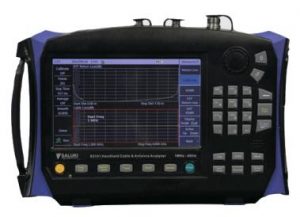The signal transmitted by the wireless base station and the signal transmitted by the mobile station are all completed by the antenna feeder system. Therefore, the quality and operation of the antenna feeder system will directly affect the call quality, wireless signal coverage and transceiver.
When the transmitting antenna feeder fails, the transmitted signal will cause loss, which will affect the coverage of the base station. If the fault occurs in the transmitting antenna feeder, the base station will close the transceiver connected to it. When the receiving antenna feeder fails, the signal received by the mobile station will be weakened, thereby causing the phenomenon that the mobile station cannot occupy the wireless channel of the base station within the range of the base station with strong signal received by the mobile station, and also affects the call quality. And even led to dropped calls.
At present, the base station only monitors the transmitting antenna feeder, and does not cause the signal transmitted by one transmitter to invade another transmitter when the isolation between the antennas is not required, and the transmitter is in the transmitter. The output stage is intermodulated with the output signal to produce a new combined frequency signal that is transmitted along with the wanted signal to form interference to the receiver. Therefore, daily maintenance testing of the antenna feeder system, especially the isolation of the receiving antenna feeder and the antenna, is necessary to detect the problem early and prevent it from happening.
The failure of the antenna feeder system mainly occurs on the antenna, cable and connector. If the installation is not in conformity, the drainage of the antenna is not smooth, causing water in the antenna when it is raining. The joint is not handled well, and the water in the joint is caused by wet or rainy weather. If it is not found and carried out in time Processing will further damage the feeder. In large cities, due to various conditions, many places do not have enough space for the installation of the antenna. In this case, the installed antenna cannot determine that the side and back lobes are insufficient enough to affect the isolation. Receiving the antenna feeder for monitoring, when the receiving antenna feeder fails and affects the network service quality, no alarm is generated, and the maintenance personnel cannot timely perform accurate fault location and waste manpower and time.
The test of the antenna is mainly based on measuring the value of the standing wave ratio (VSWR) or Return Loss and the isolation (Isolation) to judge the installation quality and operation of the antenna feeder. The VSWR alarm of the base station transmitting the antenna feeder is generally set to 1.5, and the isolation requirements between the antennas of different types of base stations are also different.
The instruments that can be tested on the antenna feeder are: spectrum analyzer, TDR, cable and antenna analyzer. When measuring the standing wave ratio of the antenna feeder by the spectrum analyzer, the forward power and the reverse power are measured first, and the return loss value is obtained, and then the standing wave ratio value is obtained by checking the comparison table between the return loss value and the standing wave ratio; using TDR The waveform of the antenna feeder can only be roughly observed to determine which point is wrong. The cable and antenna analyzer can directly measure the value of VSWR and isolation of the antenna, and can quickly locate the fault.
Saluki S3101 cable and antenna analyzer adopts advanced techniques such as hybrid integration design of RF circuit and digital circuit, wideband fundamental-wave mixing, digital IF processing, intelligent power management. S3101 has been optimized for field conditions, ease of use, and efficient sweep management capabilities. S3101 cable and antenna analyzer can be used in many areas including wireless service provider, cable and antenna system contractor, military and defense, public safety.

Fig.1 S3101 cable and antenna analyzer



